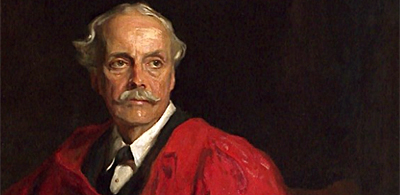Back To The Futurists
The Italian Futurists had an obsession with all things modern, the city, the automobile, the plane. They turned their backs on the past and set their sites on the technological future, hence their name. Their mania for speed, whether that of a fast moving car or a diving plane, was based upon a veneration of technology; they even came to identify the din of the city as “The Art of Noise,” the mechanical world’s equivalent to bird song and the babbling brook.

Now a new Italian museum, The Wolfsoniana, presents a major collection of Futurist works consisting of some 20,000 objects and 17,000 documents; which includes an original copy of “The Futurist Manifesto,” the influential proclamation written in 1909 by the movement’s founder, Filippo Tommaso Marinetti.
However, while the Futurist vision of a machine world was brilliantly expressed aesthetically, it was doomed to ultimate failure because it was coupled with fascist ideology. Marinetti’s angry manifesto heralded a new art movement but also prefigured the fascist takeover of Italy. In his original statement Marinetti proclaimed, “We want to glorify war – the only cure for the world.”

In retrospect it’s easy to be dismissive of the Futurists for their close connections to Benito Mussolini, but their rhetoric was remarkably similar in tone to things I hear and read today.
How is our current infatuation with technology any different than theirs? It begs the question, “How do you know you are not a fascist?” Perhaps we’ll find the answer by studying the Wolfsoniana collection of artworks prompted by Italy’s bygone totalitarians.





